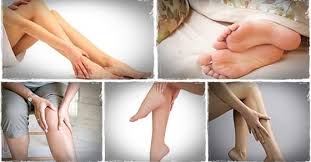
Restless leg syndrome is an unusual neurological issue characterized by legs that feel as though they
need to get up and move.
Restless leg syndrome is not a deadly disease, and it doesn't indicate any other brain problems.
Nevertheless, it can be very disruptive to your quality of life.
Restless leg syndrome is often difficult to understand, because it is somewhat subjective feeling.
The idea behind RLS is that the legs make the individual feel as though they need to get up and
move. The symptoms of RLS are not always in the legs either. Some experience it in the arms, and
possibly the trunk.
The restless "feeling" itself may be different for different people. Some describe it as:
Pain
Ache
Crawling
Tickle
Twitching
The feeling starts to become disruptive and noticeable, leading the individual to feel that they
absolutely must get up and move.
Why is Restless Leg an Issue?
Restless leg would not necessarily be a problem if not for when the experience occurs. During the
day in the workplace, restless leg may not be much of an issue – the individual simply gets up from
their desk, walks around, and sits back down.
Some people experience RLS while asleep, causing them to wake and not get enough rest. In
addition, one of the characteristics of RLS is "leg jerking." This is when the leg kicks out, thus waking
the person up from their sleep (and possibly kicking anyone next to them).
Restless leg symptoms also tend to get worse when relaxing.
For those living with restless leg syndrome, it's comforting to know that the disorder is not
dangerous or life threatening
However, restless leg can have secondary dangers, because a lack of sleep can cause stress, poor
decision making, and fatigue problems. RLS is its own disorder, but several types of health problems
(such as diabetes and nutrient deficiencies) tend to be more common in those with RLS. The reason
for this isn't entirely clear, but it's likely that the stress from a lack of sleep makes one at greater risk
for these health conditions.
Restless leg itself may also be stressful, and that stress can contribute to its own problems.
Causes of RLS
While restless leg is a neurological disorder, its causes are a bit less clear.
It's largely believed to be a genetic issue. More than half of all RLS cases are passed down from a
relative with RLS, indicating a strong genetic link.
Iron deficiency is also believed to contribute to RLS. Low levels of iron are common in RLS patients,
and many believe that those with "enough" iron may still not be getting enough to the areas of the
brain that need it.
Studies have shown that to some extent dopamine, which also may be involved in RLS, may also be
triggered or exacerbated by other underlying health conditions. Some of these include:
Pregnancy
Diabetes
Celiac Disease
Thyroid Disease
Sleep Apnea
Magnesium Deficiency
Fibromyalgia
Those with a vein disease were also found to more commonly have RLS. Some medicines can also
contribute to RLS, or trigger it temporarily.
Diagnosis of RLS
RLS is a subjective experience. Many people feel they have to move their legs without having RLS,
simply because of excess energy, positioning, etc. As a neurological disorder, there are also no tests
for restless leg to correctly identify who is experiencing it and who is not.
Generally, restless leg is diagnosed through the process of elimination and through shared
experiences.Often a doctor will try to rule out any underlying issues, and may check for vitamin
levels (to ensure there is proper amount of iron and other nutrients in the blood)
RLS Treatments
There are a variety of ways to treat RLS.
If any underlying symptom is present, then treating the underlying symptom will come first.
Doctors may also prescribe medications for those living with RLS.
Dopamine agonists are common, although most doctors will explore other options before using
these drugs.
Anticonvulsants may also be prescribed, with a few (like Gabapentin Enacarbil) designed specifically
for those living with RLS. These are generally recommended when the restless leg is considered
painful, since that pain can be very stressful.
Also, many sleep aids may be prescribed as well. This is to prevent the most troubling symptom of
RLS – the waking in the middle of the night.
HOMOEOPATHIC APPROACH
Homoeopathic medicines are prescribed based on understanding the personality types and different symptom peculiarities.it cures cases completely without any side effects.
Living with RLS
Restless leg syndrome can be a highly unpleasant disorder.
While it's not life threatening, it's stressful enough that curing it remains a top priority. Restless leg
prevents sleep, can be disruptive in both the workplace and at home, and causes enough stress that
those with RLS may be at risk for stress-related long term health issues.
Luckily, treating RLS is possible, and with treatment and lifestyle changes, anyone living with restless
leg syndrome should be able to control the issue in time.
Diet For RLS
You can add food rich in iron , magnesium and vitamin will help patients with RLS.
dark greens like chard, spinach, and dates
nuts and seeds, including pumpkin and squash seeds
fish like mackerel and tuna
beans and lentils
avocados
bananas
low-fat and non-fat dairy, including yogurt
In addition to diet and supplements, several natural treatments can offer relief from restless leg
syndrome. These treatments include:
Homeopathy
sitting in a warm bath, which can relax muscles
oil massages
moderate exercise regularly, which can reduce symptoms of RLS
avoiding caffeine, which can agitate RLS and decrease magnesium in the body
utilizing relaxation techniques like meditation to lessen the stress that can aggravate RLS
establishing a regular sleep routine.






Write a comment: